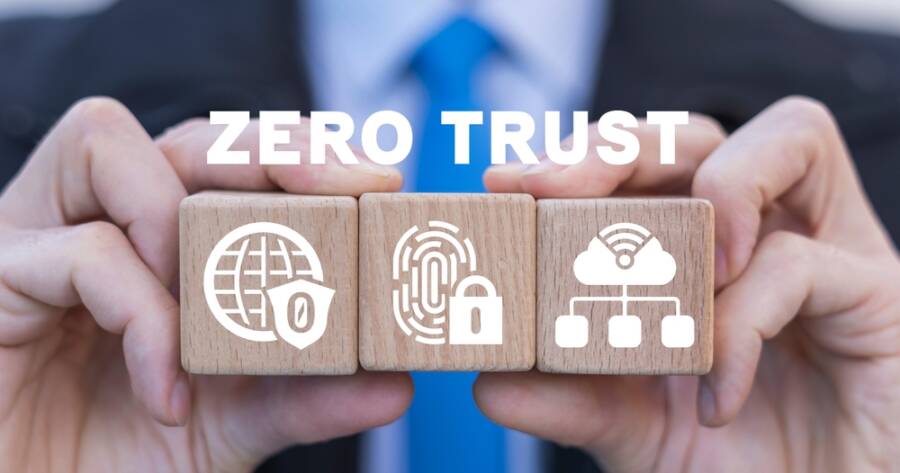In a world where cyber threats grow more sophisticated every day, businesses can no longer afford to rely on outdated perimeter-based defenses. Zero Trust Security has emerged as a critical framework to safeguard sensitive data and infrastructure. But implementing Zero Trust is no small feat. Drawing insights from top Fortune 100 CISOs (Chief Information Security Officers), this article explores actionable strategies and principles that can help businesses successfully adopt and thrive with a Zero Trust model.
Understanding Zero Trust: Beyond the Buzzword
Zero Trust Security operates on a simple yet powerful principle: “Never trust, always verify.” Unlike traditional models that assume entities within a network are trustworthy, Zero Trust insists on continuous verification for every user, device, and application.
Fortune 100 CISOs stress that Zero Trust is not a product but a strategy. It’s built around three core pillars:
- Identity and Access Management (IAM): Strong authentication mechanisms and granular permissions are essential.
- Micro-Segmentation: Dividing a network into smaller, isolated segments reduces the attack surface.
- Continuous Monitoring: Real-time analytics ensure any anomalous activity is swiftly identified and addressed.
Implementing Zero Trust requires businesses to rethink not just their technology stack, but also their cultural and operational processes.
The Fortune 100 Approach to Zero Trust Adoption
Start with a Clear Vision and Risk Assessment
Many CISOs advise beginning with a comprehensive assessment of your current cybersecurity landscape. Identify critical assets, evaluate risks, and map out potential vulnerabilities. Establishing a clear baseline helps in prioritizing efforts and allocating resources effectively.
One key takeaway: communicate this vision across the organization. Ensuring buy-in from both technical teams and executives is crucial for long-term success.
Invest in Identity-Centric Security
Identity is the cornerstone of Zero Trust. CISOs recommend implementing solutions like multi-factor authentication (MFA), single sign-on (SSO), and privileged access management (PAM). By tightly controlling who has access to what, organizations can significantly reduce the likelihood of unauthorized access.
It’s also important to apply the principle of least privilege (PoLP). Only grant users the access they need to perform their tasks—no more, no less.
Leverage Technology to Automate and Scale
While Zero Trust involves cultural change, technology plays a key role. Advanced tools like security orchestration, automation, and response (SOAR) platforms can streamline processes such as access control and threat detection. CISOs in large organizations often emphasize the importance of scalable solutions, especially in hybrid and multi-cloud environments.
Notably, Zero Trust does not mean eliminating VPNs entirely; rather, consider replacing or augmenting them with more secure alternatives like software-defined perimeters (SDP) or secure access service edge (SASE) models.
Overcoming Common Implementation Challenges
Balancing User Experience and Security
A frequent challenge in Zero Trust is ensuring security without compromising productivity. For example, implementing MFA can frustrate users if not deployed thoughtfully. CISOs recommend:
- Using adaptive authentication to minimize disruptions.
- Educating users about the importance of these measures.
Managing Legacy Systems
Many enterprises still rely on legacy systems that weren’t designed with Zero Trust principles in mind. Replacing these systems outright may not always be feasible. In such cases, implementing compensating controls—like monitoring tools and proxy services—can help bridge the gap.
Cultural Resistance
Zero Trust represents a paradigm shift, and resistance from employees or leadership can stall progress. CISOs suggest framing the initiative as an enabler of business resilience rather than an obstacle. Clear communication about the long-term benefits, coupled with ongoing training, can foster acceptance.
Measuring Success in Zero Trust Security
How do you know if your Zero Trust implementation is working? Fortune 100 CISOs recommend tracking these key metrics:
- Incident Response Time: Measure how quickly your organization detects and mitigates threats.
- Access Request Anomalies: Monitor and minimize unauthorized access attempts.
- User Compliance Rates: Track adherence to policies like MFA and least privilege.
These metrics not only demonstrate the effectiveness of your Zero Trust strategy but also help in refining it over time.
Future-Proofing Your Zero Trust Strategy
Zero Trust is not a one-and-done solution. It requires constant evolution to keep pace with emerging threats and business needs. CISOs advocate for embedding Zero Trust principles into every aspect of the cybersecurity strategy, from vendor selection to employee onboarding.
Furthermore, consider participating in industry forums and adopting standards such as the NIST Zero Trust Architecture (ZTA) framework. Collaboration with peers and alignment with proven methodologies can accelerate your Zero Trust journey.
Building Resilience Through Zero Trust
Zero Trust is more than a cybersecurity buzzword—it’s a transformative approach to securing modern businesses against evolving threats. By focusing on robust identity management, leveraging scalable technology, and fostering cultural change, organizations can create a resilient defense against even the most sophisticated cyber adversaries.
While implementing Zero Trust may be challenging, insights from Fortune 100 CISOs underscore that a thoughtful, phased approach can yield tangible benefits. Success lies in treating Zero Trust not as a destination, but as an ongoing journey toward improved security and business continuity.
